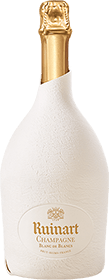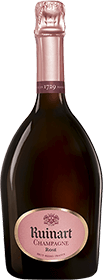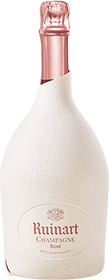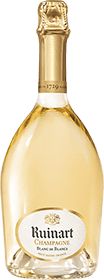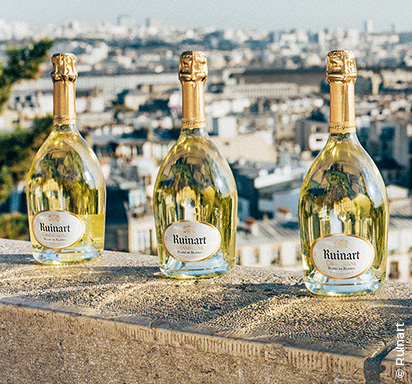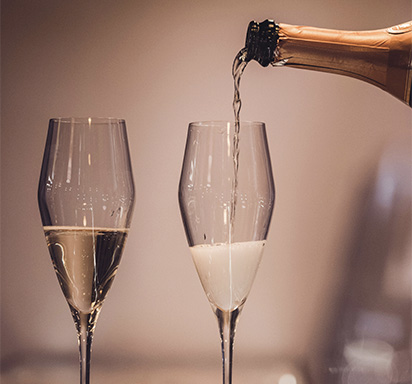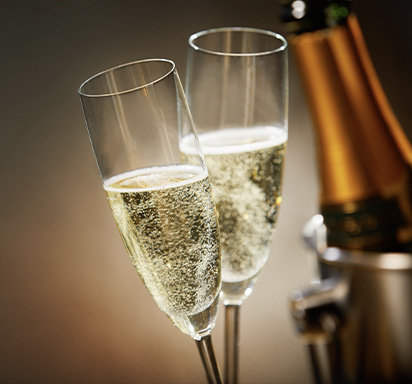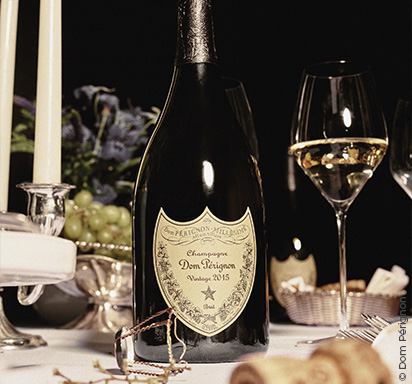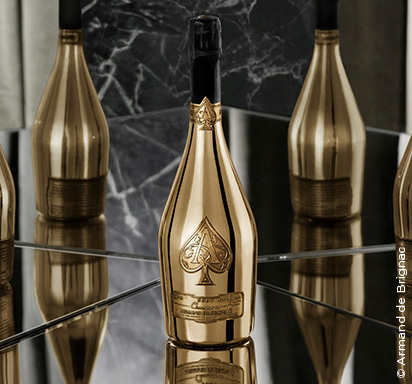Maison Ruinart | The Legacy of the First Champagne House
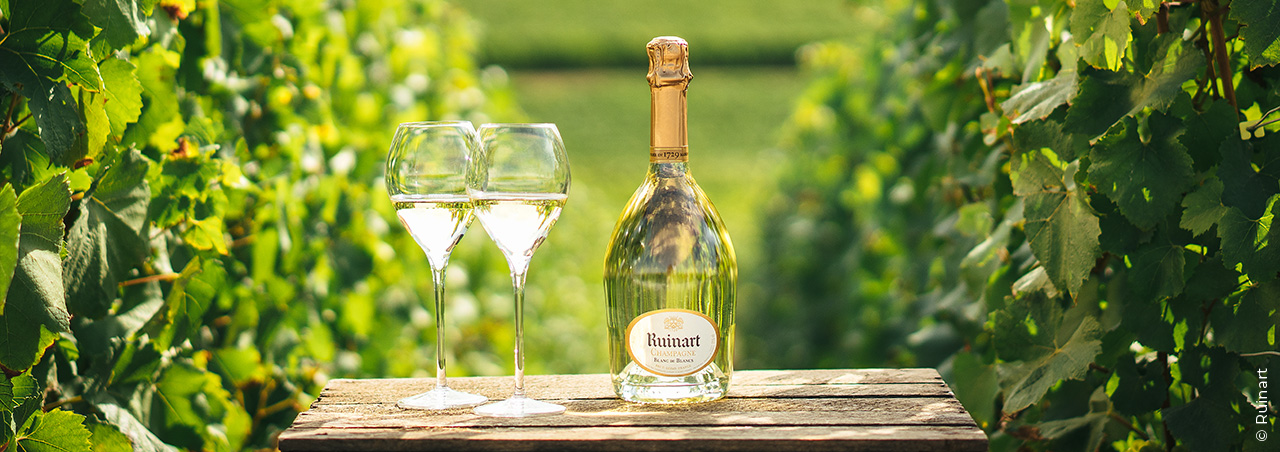
Maison Ruinart, founded in 1729, is the first Champagne house. Known for its elegant Blanc de Blancs and rosé cuvées, Ruinart ages its champagnes in historic chalk cellars, blending tradition with artistic innovation.
Owned today by luxury goods giant LVMH, Maison Ruinart stands out as the very first of Champagne’s iconic houses. Over the course of almost three centuries, Ruinart has led the way in the production of fine champagne, choosing to highlight the elegance and generosity of Chardonnay sourced from the region’s most celebrated terroirs. Their signature “Blanc de Blancs” and rosé cuvees are blended with great care, aged for years in the estate’s underground network of chalk tunnels, and presented to the world through the perspective of celebrated artists.
Maison Ruinart: The First in Champagne
As the very first Champagne House founded in 1729, Ruinart is held in the highest esteem in the hearts of champagne purists. This historic House owes its creation to its visionary and former monk Dom Thierry Ruinart, who understood the frenzy the nobility had for this sparkling wine that did not yet have the name champagne. Dom Ruinart wrote the founding act of the House that is still preserved until this day.
Inspired by his uncle Dom Thierry Ruinart, a Benedictine monk and visionary who predicted the enormous success of “wine with bubbles,” the founder Nicolas Ruinart was aided by the royal decree of 1728 in which Louis XV finally allowed the commercial transport of bottled wine in France. Nicolas launched his sparkling wine in the European market in 1730, and by 1735 it became so successful that he was forced to “quit his day-job” as a draper and focus solely on champagne production. This visionary established his own Champagne House in Épernay in 1729, making Ruinart one of the oldest Champagne estates.
Nicolas Ruinart initially offered his sparkling wine to clients who purchased his fabrics, but in 1736, the house’s history took a different turn: he made the bold choice to abandon the textile business and dedicate himself entirely to Champagne.
A Craftsmanship Without Borders
In the mid-18th century, Claude Ruinart, nicknamed "the traveler," took the helm of Maison Ruinart and established commercial relations with various European countries. As an innovator, he exported his first bottles as early as 1769, a pioneering act that opened the way for the transport of Champagne in France and abroad.
Putting the "Art" in Ruinart
Ruinart’s legacy as a patron of the arts can be traced back to 1895, when Andre Ruinart commissioned the famous Czech illustrator Alphons Mucha to design Ruinart’s first poster advertisement, which was also one of the first advertisements in France. The estate continues this tradition by selecting a new artist each year to create original pieces for Maison Ruinart and incorporate their style into the packaging of a limited series of their Blanc de Blancs. Artist collaborators have included India Mahdavi in 2006, Christian Biecher in 2007, Maarten Baas in 2008, Nacho Carbonell in 2010, Gideon Rubin in 2011, Herve Van Der Straeten in 2012, Piet Hein Eek in 2013, Georgia Russell in 2014, Hubert le Gall in 2015, and Erwin Olaf in 2016.
These works, each of which represents one artist’s understanding of some aspect of Ruinart’s brand identity, have been featured at art shows around the world. Most recently, the estate collaborated with Chinese artist Liu Bolin who created images of Ruinart staff camouflaging into their background throughout various steps of the winemaking process. This work is meant to emphasize the people behind Ruinart and their close connection to both technology and nature.
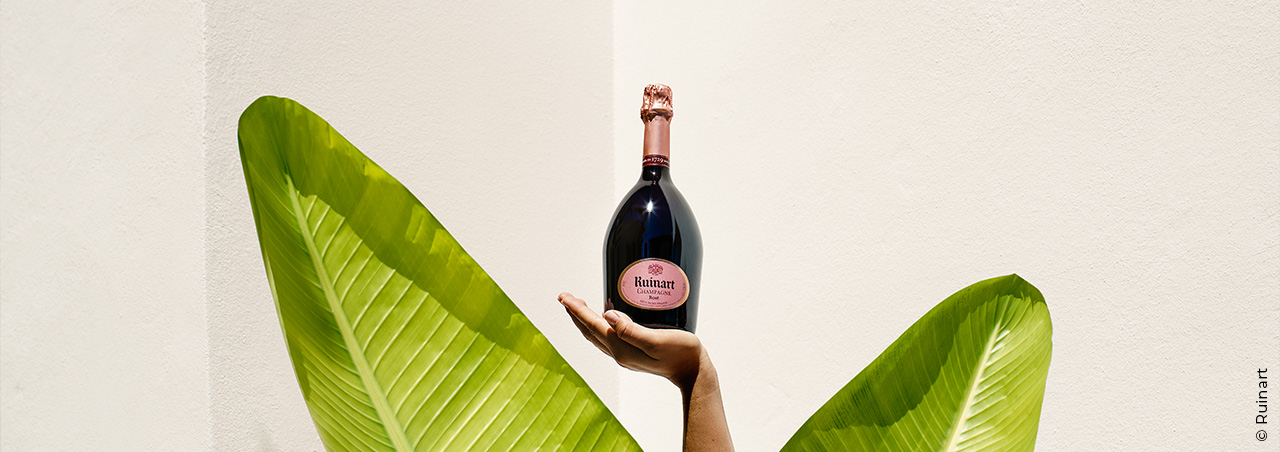
At the Roots of a UNESCO World Heritage Site
In 1877, the house acquired an exceptional location: the crayères, natural chalk cellars located several meters underground in the city of Reims. Recognizing the optimal conditions, Ruinart became one of the first houses to store its bottles there, benefiting from a stable temperature, constant humidity, and low light. The crayères of Ruinart are still a popular attraction today and were declared a French historic monument in 1931. The chalk labyrinths of Champagne in general were further declared a UNESCO World Heritage Site in July 2015.
The descendants of Claude Ruinart led the house until 1963, when they partnered with Moët & Chandon, and in 1987, the group was taken over by LVMH.
An Exceptional Heritage A Viticultural Jewel Producing Exceptional Champagnes
Ruinart creates its cuvées from three grape varieties: Chardonnay, the house’s flagship, Pinot Noir, and Pinot Meunier. The grapes mainly come from the Côte des Blancs, the true kingdom of Chardonnay, and the northern slopes of the Montagne de Reims. These vineyards benefit from ideal sunlight and are planted on chalky soils, producing wines that are taut, precise, and remarkably powerful.
Symbolic for Maison Ruinart, the vineyards of Sillery and Taissy hold a special place in the heart of the estate. Sillery, classified as a Grand Cru for Chardonnay near Reims, is one of the oldest listed grand crus and still belongs to the descendants of the Ruinart family. Nearby, Taissy, classified as Premier Cru, appears in records dating from 1733, four years after the house was founded.
Committed to a responsible approach, the estate has obtained the High Environmental Value and Sustainable Viticulture in Champagne certifications since 2014.
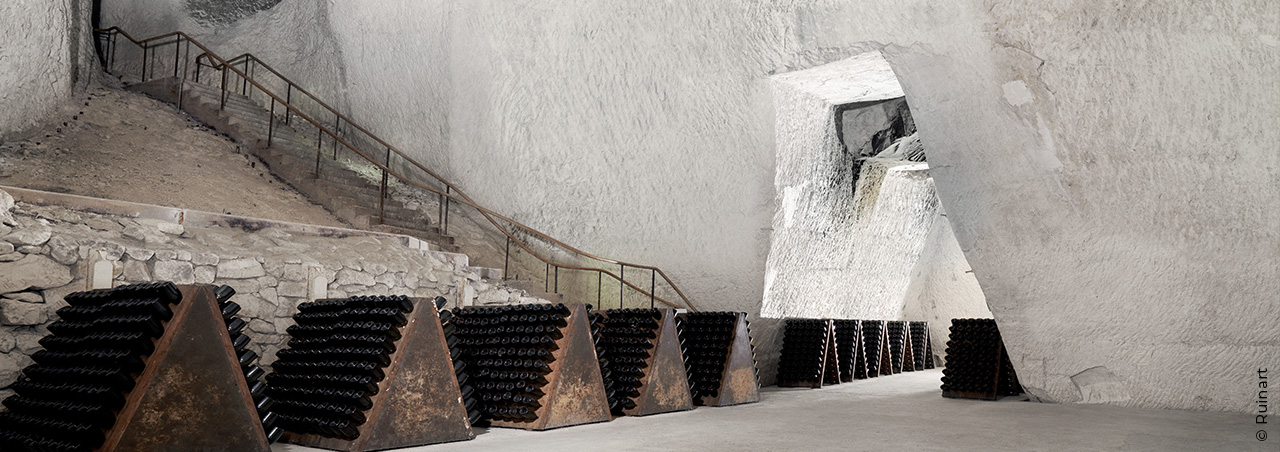
The Chalk Cellars, an Invaluable Heritage
With the expansion of production to meet the great demand, the business quickly outgrew its cellars. In 1768, Claude Ruinart decided to purchase 8 kilometers of crayères (Gallo-Roman chalk quarries) which had been excavated underneath Reims. The crayères of Ruinart (the first of any other Champagne house) are an impressive maze of chalk chambers dug down to 38 meters deep and still used to age the estate’s champagnes today. Formed during the Cretaceous period, the chalk that constitutes the walls of the crayères has withstood the test of time, making them the only historical site of their kind in Reims.
It is at the heart of this exceptional labyrinth that several essential steps in the production of Ruinart champagnes take place: riddling, the second fermentation, and remuage. Finally, these ancient chalk quarries provide ideal conditions for the aging of wines, thanks to the darkness, ideal humidity, and constant temperature of 10 to 12 degrees.
The Art of Creating Exceptional Bottles Chardonnay: More Than a Grape Variety, an Icon
"Each Chardonnay brings its own complexity, depending on the origin of its terroir." - Frédéric Panaïotis, Cellar Master of Maison Ruinart.
In 1947, Bertrand Mure, a member of the Ruinart family who became head winemaker, chose Chardonnay as the house signature to bring freshness and elegance to champagnes. Since then, this delicate grape variety has been part of all the house’s cuvées, particularly the vintage Dom Ruinart cuvées, for which only grand cru Chardonnays are selected.
Viticulture and Winemaking at Maison Ruinart
The grapes, resulting from meticulous vineyard work, are hand-harvested before being precisely pressed. They then undergo alcoholic fermentation, followed by malolactic fermentation, during which malic acid is transformed into lactic acid. Once the blending is done in vats, the wine is bottled, where sugar and yeasts are added and sealed with metal caps. Notably, for Dom Ruinart Blanc de Blancs 2010, the estate has returned to an ancestral practice by replacing the caps with corks, adding a more noble dimension to the cuvée.
The second fermentation takes place in the bottle, followed by an extended aging period. This period is longer than average, allowing for the development of remarkable complexity and finesse. Each cuvée has its own aging time: around 3 years for R de Ruinart, Blanc de Blancs, and Rosé, around 7 years for vintage wines, and around ten years for Dom Ruinart bottles. The remuage, either manual or mechanical, allows the yeasts to settle in the neck of the bottle, followed by disgorging to remove this sediment. Lastly, the addition of the dosage liqueur defines the final style of the champagne.
The Signature Style of Ruinart
Blanc de Blancs by Ruinart, Purity, and Finesse: Since its first vintage in 1947, this Blanc de Blancs perfectly embodies the Ruinart style. It captivates the senses with its fresh and intense nose, as well as its ample and generous palate.
R de Ruinart, Richness, and Freshness: The epitome of a unique style, this brut champagne stands out for its rich and complex bouquet, as well as a palate that harmoniously combines creaminess, elegance, and liveliness.
Brut Rosé by Ruinart, Subtlety, and Character: Since the 18th century, Ruinart has innovated by creating one of the first Brut Rosé champagnes. Its garnet color precedes a fruity nose and a precise and balanced palate.
Dom Ruinart, an Exceptional Vintage Champagne: Created in 1959 in homage to Dom Thierry Ruinart, this prestige champagne embodies the quintessence of great terroirs and is made exclusively from grand crus. Produced only in great years, these vintage cuvées reveal, after 10 years of aging in the cellar, the full extent of their finesse and complexity.
You may like
Uncover the allure of Ruinart Blanc de Blancs, crafted exclusively from Chardonnay. From sustainable vineyards to its refined flavor and iconic design, learn why this Champagne is a symbol of elegance and excellence.
1/16/2025Brut and Extra Dry Champagne differ in sweetness, with Brut being drier and Extra Dry slightly sweeter. Learn their flavor profiles, food pairings, and which one suits your preference for celebrations and special occasions.
3/17/2025Prosecco and Crémant are both sparkling wines, but their differences lie in production methods, flavor, and origin. Learn about the Charmat and traditional methods, the taste profiles, and the best food pairings for each wine.
1/31/2025Unveil the unique characteristics of Champagne Blanc de Blancs and Blanc de Noirs. Learn how these two styles differ in flavor, grape varieties, and food pairings to elevate your Champagne experience.
12/19/2024Discover how to select the ideal Dom Perignon Champagne for any occasion. From top vintages like 2008 and Rosé to expert tips on serving and pairing, this guide helps you impress your guests with luxury champagne.
11/12/2024Armand de Brignac, the "Ace of Spades," blends centuries-old winemaking by the Cattier family with Jay-Z's flair. Known for its luxurious taste and iconic hand-finished bottles, it offers five prestigious cuvées.
10/8/2024